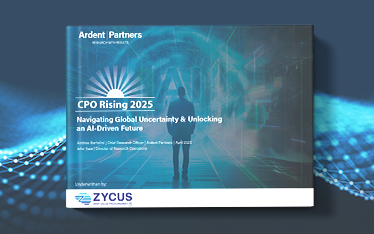At Zycus Horizon US 2024, Micky Keck, Director Analyst at Gartner, shared insights on how Generative AI (GenAI) is reshaping procurement, why prioritization is key, and how organizations can maximize efficiency, savings, and competitiveness through AI adoption.
Key Takeaways from Micky Keck’s Session:
- The Rapid Rise of GenAI in Procurement: Once a niche technology, GenAI has now become a competitive necessity, with 79% of supply chain executives planning deployment.
- AI vs. GenAI – Understanding the Difference: While traditional AI focuses on data analysis, GenAI creates content, such as contracts, RFx documents, supplier insights, and analytics reports.
- The Business Impact of AI Adoption:
- 21% expected increase in productivity from GenAI-powered automation.
- 12% cost savings through AI-driven efficiencies in procurement and sourcing.
- Faster contracting, sourcing, and supplier management with AI-powered workflows.
- High-Value AI Use Cases in Procurement:
- Contract Management: Automating clause generation, negotiation support, and risk analysis.
- Sourcing Optimization: AI-generated RFx events and supplier risk insights.
- Analytics & Decision Support: AI-powered reporting for executives, summarization of sourcing results.
- User Experience & AI-Driven Interfaces: GenAI simplifies procurement interactions, reducing training needs.
- Prioritizing & Deploying GenAI: Companies should focus on high-value, highly feasible AI applications to maximize return on investment.































